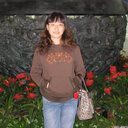Screening of cytoprotectors against methotrexate-induced cytogenotoxicity from bioactive phytochemicals.
Cuvinte cheie
Abstract
As a well known anti-neoplastic drug, the cytogenotoxicity of methotrexate (MTX) has received more attention in recent years. To develop a new cytoprotector to reduce the risk of second cancers caused by methotrexate, an umu test combined with a micronucleus assay was employed to estimate the cytoprotective effects of ten kinds of bioactive phytochemicals and their combinations. The results showed that allicin, proanthocyanidins, polyphenols, eleutherosides and isoflavones had higher antimutagenic activities than other phytochemicals. At the highest dose tested, the MTX genetoxicity was suppressed by 34.03%∼67.12%. Of all the bioactive phytochemical combinations, the combination of grape seed proanthocyanidins and eleutherosides from Siberian ginseng as well as green tea polyphenols and eleutherosides exhibited stronger antimutagenic effects; the inhibition rate of methotrexate-induced genotoxicity separately reached 74.7 ± 6.5% and 71.8 ± 4.7%. Pretreatment of Kunming mice with phytochemical combinations revealed an obvious reduction in micronucleus and sperm abnormality rates following exposure to MTX (p < 0.01). Moreover, significant increases in thymus and spleen indices were observed in cytoprotector candidates in treated groups. The results indicated that bioactive phytochemicals combinations had the potential to be used as new cytoprotectors.


